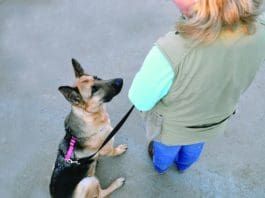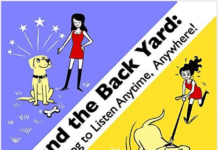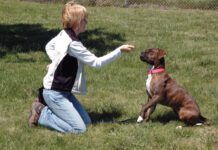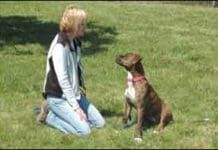Training Your Dog to Learn
Operant conditioning and classical conditioning, though mostly applied to human psychology nowadays, are structures that were first developed in observing dog behavior. They are somewhat opposite methods of behavioral modification, however both are effective in training animals (and young children). They work simply to reverse bad habits and teach good ones. Read on to learn the difference, and get your dog obeying all your commands, every time.
Fluency and Generalization in Dog Training
Fluency and generalization training methods prepare your dog to respond and behave correctly in ANY situation. In dog training, generalization means that your dog can apply a concept to many situations; he knows that Sit!" means he should sit whether he's home
Clean Up Your Cues!
It's important to know what your cues are for your dog. Yes, I bet you think you know, but in reality your dog may think your cues are very different than what you think they are.
How to Get a Dog to Behave
Berkeley
Teach Your Dog to Help With Chores Around the House
Okay, I'll confess: I'm a lousy housekeeper. So when I first saw the YouTube videos starring Jessie the Jack Russell Terrier, who has been trained to do countless household chores, I found the idea of training my dogs to help me with the housework quite appealing.
Train Your Dog Using Imitation
I remember, years ago, confidently and assertively telling my training academy students "Dogs don't learn through imitation." But, degree by degree, I've been proven to be wrong.
Teaching Your Dog Calm, Slow Breathing
Radio talk show psychologist Dr. Joy Browne offers her listeners a stress-reducing “Square Breathing” technique. To relax before or during any potentially anxiety-producing experience, try square breathing: Inhale to the count of four, hold to the count of four, exhale to the count of four, and hold for four. With practice, you can increase each side of the “square” to a count of eight or even 20; the longer the count, the slower and more calming the breathing.
Has Your Dog Training Program Hit a Wall?
If training on your own, consider enrolling in a class or booking a private lesson for one-on-one attention. You aren’t expected to have all the answers yourself. All dogs are different. Even if you’ve trained previous dogs on your own, a little professional guidance might be just what you need to jumpstart success.
An Observation Technique That Will Improve Your Dog Training
How well do you really know your dog? Like most trainers and competitors, Nancy Tanner of Bozeman, Montana, assumed she knew hers inside out – until some whales and their trainers taught her an important lesson. You too can adopt the simple technique she learned at a marine mammal park to improve canine interactions at all levels.Tanner’s path of discovery began five years ago at Sea World in San Diego, California, where she took a behind-the-scenes tour. What caught Tanner’s attention was the whales’ “free-time pool.” In this large, safe, comfortable environment, whales do whatever they like. Sometimes the pool is occupied by a single whale and sometimes by two or more. Trainers are always present but they never initiate activity. They simply watch and wait.
Dog Training With Hand Signals
as long as you are consistent.üThis is the gesture I use for cuing "Down!" It's a large signal that can be seen by a dog who is far away.üThis is the gesture I use for cuing "Sit!"I start with my arms at my sides
Dog Trainers Use of Generalizing a Behavior
But he does it at home!” Usually uttered in a plaintive wail, this common dog owner complaint is often heard in dog training classes, among other places. When one of my students says this, I reassure them that I believe their dog probably does perform the behavior in question with a high degree of reliability in the comfort of his own home. The fact that he won’t do it in class is usually a generalization issue; the owner has only practiced the behavior with her dog at home. He doesn’t know he’s supposed to do it other places. According to authors Mary Burch, PhD, and Jon Bailey, PhD, in their excellent book, How Dogs Learn, “Generalization occurs when behaviors are seen in contexts other than those in which they were originally trained.” Simply stated, this means practicing with your dog in different places, at different times of the day, under different conditions, in the presence of different people, dogs, and a variety of other distractions.
Utilizing Target Training for Better Leash Walking
Does your dog know how to target? If not, the two of you may be missing out on one of the most versatile behaviors to come along since the rise in popularity of the positive dog training philosophy.

















